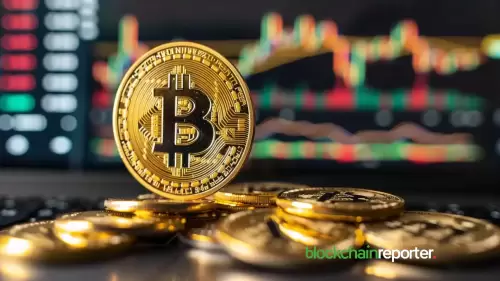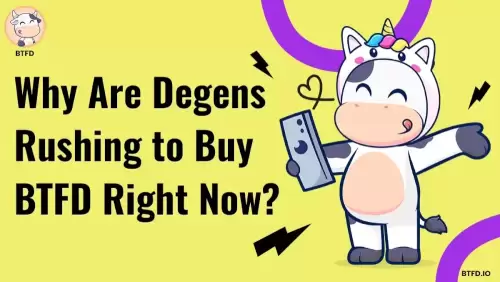 |
|
 |
|
 |
|
 |
|
 |
|
 |
|
 |
|
 |
|
 |
|
 |
|
 |
|
 |
|
 |
|
 |
|
 |
|
Coinbase(Coin)には、企業のバランスシートでBTCの独自の戦略がありますが、Michael Saylorの戦略(MSTR)のようなビットコインの最大リストではありません。

Coinbase (COIN) is making its own moves in managing its cryptocurrency holdings, but it's not embarking on a bitcoin maximalist strategy like that of Michael Saylor's Strategy (MSTR).
Coinbase(Coin)は、暗号通貨の保有を管理するための独自の動きを行っていますが、Michael Saylorの戦略(MSTR)のようなビットコインの最大主義戦略に着手していません。
During the company's first quarter 2025 earnings call, CFO Alesia Haas disclosed that Coinbase had purchased $150 million in crypto, “predominantly bitcoin,” bringing its long-term investment portfolio to $1.3 billion, or 25% of net cash.
同社の2025年の第1四半期の収益コールで、CFO Alesia Haasは、Coinbaseが1億5,000万ドルの暗号、「主にビットコイン」を購入し、長期投資ポートフォリオを13億ドル、つまり純現金の25%にもたらしたことを明らかにしました。
However, Haas took pains to differentiate Coinbase from firms that explicitly identify with holding bitcoin on the balance sheet.
しかし、ハースは、貸借対照表にビットコインを保持することと明示的に識別する企業とコインベースを区別するために苦労しました。
“To be clear, we're an operating company,” she stated. “But we do invest alongside the space.”
「明確にするために、私たちは運営会社です」と彼女は述べました。 「しかし、私たちはスペースと一緒に投資しています。」
In essence, Coinbase isn't tying its fate to bitcoin. On a Q&A call with retail investors, Armstrong noted a temptation in their early days to place a lot of BTC on the balance sheet, but it was deemed too risky at the time. Crypto is renowned for its volatility, and at that stage, Coinbase was a nascent company starting out in a new industry.
本質的に、コインベースはその運命をビットコインに結びつけていません。 Armstrongは、小売投資家とのQ&Aコールで、バランスシートに多くのBTCを置くように彼らの初期の頃に誘惑に注目しましたが、当時はあまりにも危険であると考えられていました。 Cryptoはそのボラティリティで有名であり、その段階では、Coinbaseは新しい業界で始まった初期の会社でした。
Now, a listed giant, there's less of a need for such a risky move. Coinbase is deploying profits from its core business back into crypto assets, similar to how a commodity firm might accumulate raw materials it possesses deep knowledge of. It's less about Michael Saylor and more about a capital recycling strategy aligned with their sector.
現在、リストされている巨人、このような危険な動きの必要性は少ないです。 Coinbaseは、商品会社が深い知識を持っている原材料を蓄積する方法と同様に、コアビジネスから利益を暗号資産に展開しています。それはマイケル・セイラーについてではなく、彼らのセクターと一致する資本リサイクル戦略についてです。
In fact, Coinbase didn't even highlight the purchase in their shareholder letter. The news came to light in response to a retail shareholder's question about “accruing hard crypto reserve assets.”
実際、Coinbaseは株主の手紙で購入さえ強調していませんでした。このニュースは、「ハードクリプトリザーブアセットの獲得」に関する小売株主の質問に応じて明らかになりました。
CEO Brian Armstrong didn't comment directly on the purchases but did provide a philosophical context. He pointed out that Coinbase isn't dabbling in crypto—it's their core domain.
CEOのブライアン・アームストロングは、購入について直接コメントしませんでしたが、哲学的な文脈を提供しました。彼は、CoinbaseがCryptoに手を出していないことを指摘しました。それは彼らのコアドメインです。
"We've been focused on crypto since the beginning, 12 years ago, and we continue to be focused there," Armstrong elaborated. "Crypto is eating financial services."
「私たちは12年前の最初から暗号に焦点を合わせてきましたが、そこに集中し続けています」とアームストロングは詳しく説明しました。 「Cryptoは金融サービスを食べています。」
For Armstrong, buying BTC is a natural consequence of their deep conviction and operational alignment, not a last-minute treasury pivot or an activist bet.
アームストロングにとって、BTCを購入することは、彼らの深い信念と運用の整合性の自然な結果であり、土壇場の財務省のピボットや活動家の賭けではありません。
Coinbase isn't accumulating BTC to signal some broader market belief, nor are they becoming a vehicle for such an investment like MSTR.
Coinbaseは、BTCを蓄積して、より広範な市場の信念を示すものではなく、MSTRのような投資の手段にもなりません。
Beneath the accounting language lies something deeper: a long-term bet that holding Bitcoin, much like building the infrastructure beneath it, is simply part of the fabric of what Coinbase does. It's not a treasury strategy; it's something in-between.
会計言語の下には、より深いものがあります。ビットコインを保持することは、その下にインフラストラクチャを構築するのと同じように、Coinbaseの構造の一部です。それは財務戦略ではありません。それはその間の何かです。
免責事項:info@kdj.com
提供される情報は取引に関するアドバイスではありません。 kdj.com は、この記事で提供される情報に基づいて行われた投資に対して一切の責任を負いません。暗号通貨は変動性が高いため、十分な調査を行った上で慎重に投資することを強くお勧めします。
このウェブサイトで使用されているコンテンツが著作権を侵害していると思われる場合は、直ちに当社 (info@kdj.com) までご連絡ください。速やかに削除させていただきます。


























































